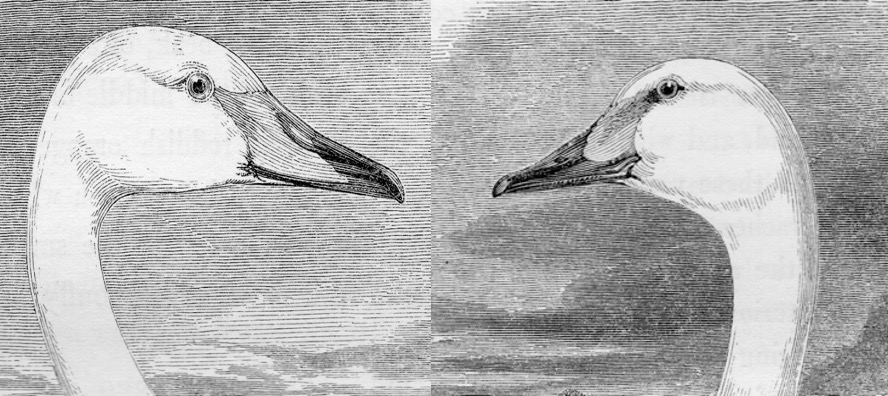Published by the British Ornithologists’ Club and John Beaufoy
£25 hardback. October 2021.

Portrait of William Yarrell, 1839, Linnean Society.
Why write about Willliam Yarrell? A more pertinent question would be “Why has Yarrell been forgotten?” While making very many contributions to natural history in the 1830-50s, his was a household name among naturalists.
William Yarrell (1784-1856) was very organised and lived his life in three separate compartments: his business, his publishing and his commitments to several major natural history societies.
Yarrell’s Business Interests
William Yarrell lived in London between Piccadilly and St James’s Park all of his life. His business as a flourishing bookseller and newsagent, with his cousin Edward Jones, was based in Bury Street in London from 1803-50. Some colleagues (including Eyton and Gould) bought their newspaper from him, while others obtained periodical titles and foreign publications. Jones and Yarrell was first awarded a Royal Warrant in 1828 and is still in business. Yarrell’s business provided the means for him to build up a formidable collection of birds, fishes, and other specimens as well as a supporting library. It enabled him to afford to live well and entertain. Invitations to his evening parties were eagerly anticipated and enjoyed both by his naturalist colleagues and other friends.
Yarrell’s Publishing Acitivities
The wide compass of his acquaintances and friends outside London, evidenced by his huge correspondence, constantly surprised and delighted me while reading and abstracting his letters. Over 200 people who sent him notes about species in their neighbourhood were named in his two books, A History of British Fishes published 1835-36 in two volumes and A History of British Birds 1837-43, in three volumes. His reporting of the distribution of species in the British Isles was a new feature in his books, as well as his recording of the history of the species in this country.
Many of his 80+ periodical articles were based on papers read to the Zoological Society illustrated with specimens and drawings made from his anatomical preparations. He had learned their value when attending anatomy lectures at the Royal Institution in 1817. They led to his many original discoveries, among them that male seahorses carried the young in their pouches; that eels were oviparous; and that bird chicks escaped from their shells by means of an egg tooth.

The difference between the structure of the Whooper Swan and a similar smaller swan that Yarrell found to be a new species and named Cygnus bewickii in 1830, after his friend Thomas Bewick who had visited him in London in 1828. (A History of British Birds, 1843, 3: 101 and 104).
Yarrell admired Bewick’s wood engravings so much that when he came to illustrate his own two books, he chose wood engraved figures. The wood engravings in his A History of British Fishes and A History of British Birds are some of the finest ever published.

A Dunlin chick, one of many vignettes in A History of British Birds (1843, 3: 19)
Yarrell’s Society Activities
Yarrell’s activities as a member of the most prestigious London natural history societies, were extensive. He was: a Fellow founder member of the Zoological Society of London in 1826-56 and served for several years as Secretary, Treasurer and Vice-President; a Fellow of the Linnean Society 1825-56, and Treasurer and Vice-President; and a Founder member of the Entomological Society in 1833, and Treasurer. He was a member of several other societies.
Yarrell’s influence was far-reaching, especially on the younger generation of naturalists. He taught Lear to base his paintings of parrots on a knowledge of their anatomy. Darwin hesitated to write The Zoology of the Voyage of H.M.S. Beagle until Yarrell gave his approval. In the 1850s Darwin and Yarrell compared notes on the transmutation of species, especially pigeons. They went to the Philoperisteron (= pigeon lover) Society annual pigeon shows and Yarrell persuaded Darwin to breed pigeons as examples of transmutations from Columba livia that changed their feather colours and bone structures over many years.
While alive, Yarrell’s immense experience was a guiding influence on the lives of many other naturalists. His reputation as an outstanding naturalist continued long after his death in 1856. His contribution to natural history was immense and deserves to be recognised and acknowledged today.
Author Information
Christine E. Jackson has published 16 books breaking new ground in the fields of bird illustration and art, and fishes in art, including four new biographies. Her 30 periodical titles add to this information among other topics. She was awarded the Society for the History of Natural History’s Founder’s Medal in 1996.
The book is widely available from on-line booksellers including NHBS.
